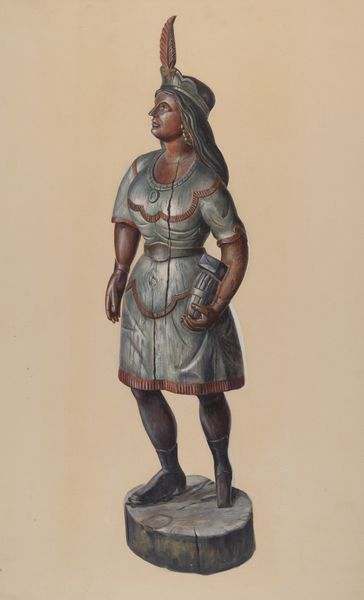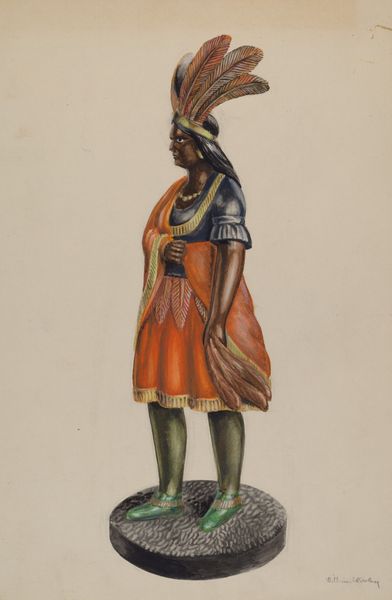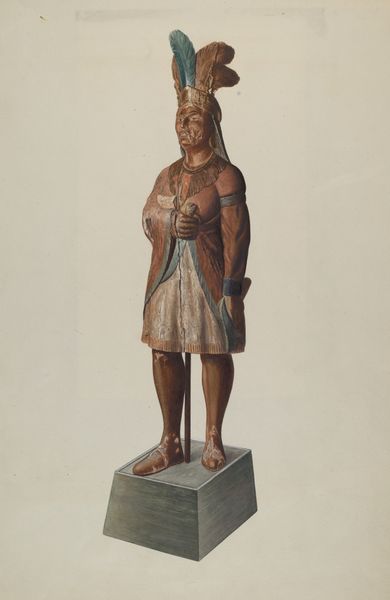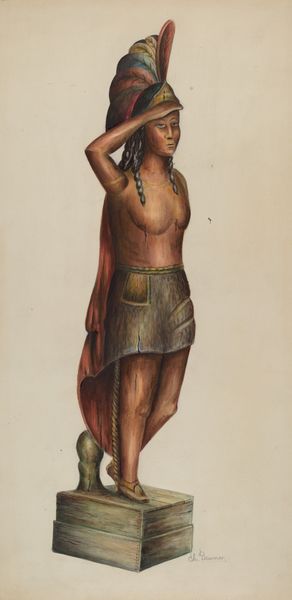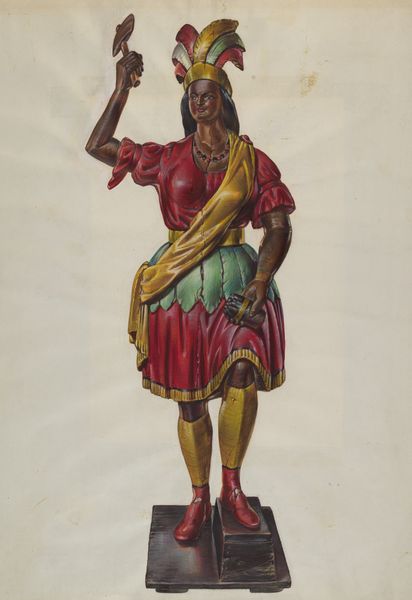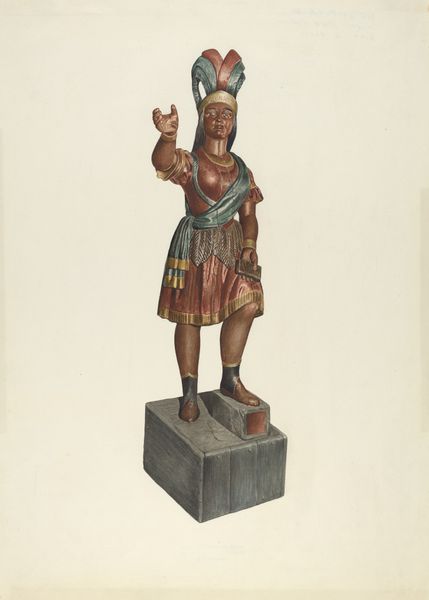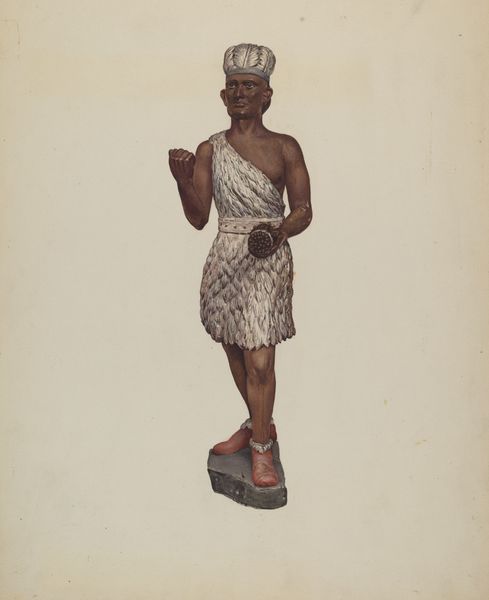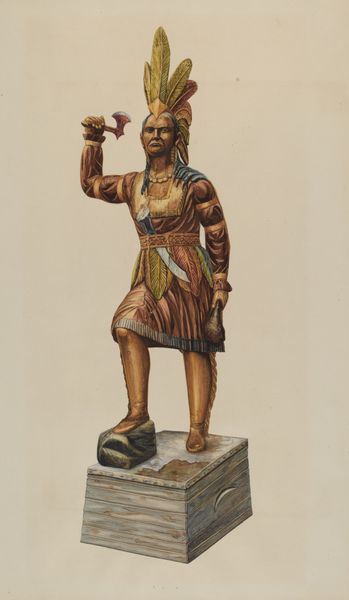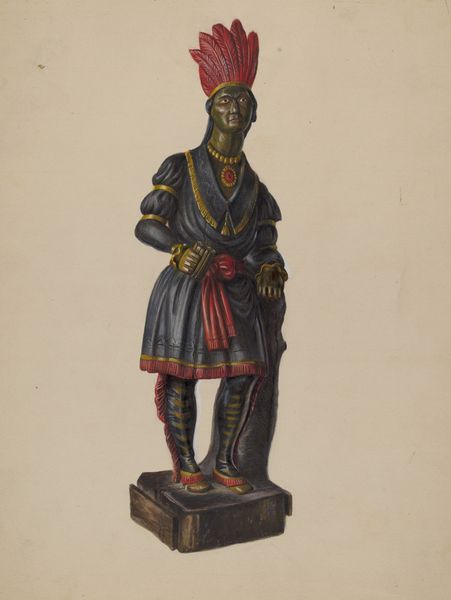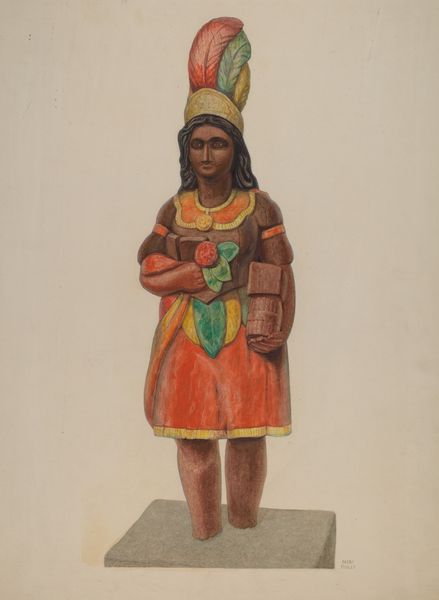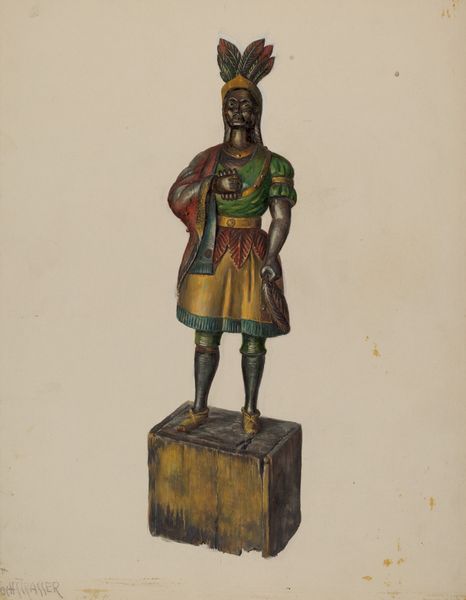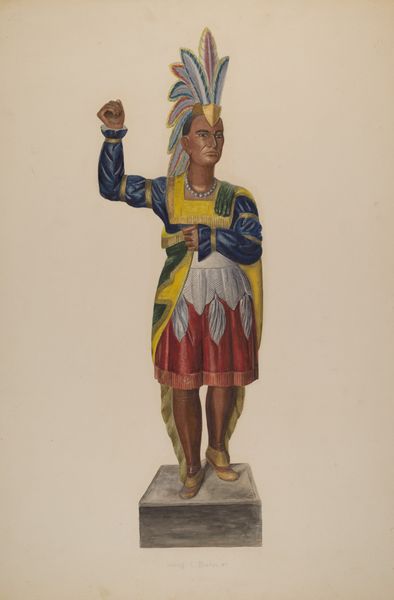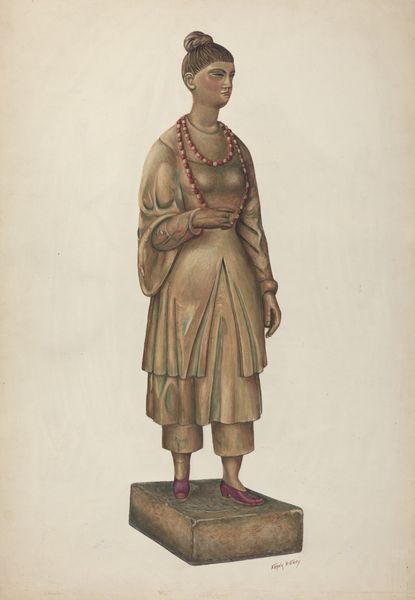
drawing, watercolor
#
portrait
#
drawing
#
figuration
#
watercolor
Dimensions: overall: 30.5 x 22.5 cm (12 x 8 7/8 in.)
Copyright: National Gallery of Art: CC0 1.0
Editor: Here we have Yolande Delasser's watercolor drawing, "Cigar Store Indian," created sometime between 1935 and 1942. It's quite striking, almost surreal in its depiction of the figure. The palette feels a little odd, somehow, clashing between naturalistic tones and cartoonish renderings. What strikes you most about this piece? Curator: The history of "cigar store Indians" as commercial symbols is deeply problematic. These figures were often stereotypical representations of Native Americans, deployed to attract customers to tobacco shops. Delasser's rendering, while appearing straightforward, invites us to consider the power dynamics inherent in such representations. Do you see how the figure is elevated, standing upon a barrel? What effect does this create? Editor: It almost feels like she's put on a pedestal...or maybe displayed like a trophy? Is Delasser commenting on the objectification of Native American culture? Curator: Precisely. During the 1930s and 40s, there was increased awareness, even if imperfect, of the harmful stereotypes perpetuated by such imagery. What I see in this watercolor is an attempt to grapple with that history, not necessarily to celebrate it. The fact it is a watercolor is interesting; it could signal that the cultural values it represents are fluid and impermanent, not carved in stone. Editor: So it's almost a commentary *on* the commodification of a culture through art? I didn't initially read it that way. Curator: It raises uncomfortable questions, doesn’t it? About how images participate in the construction—and often the distortion—of identity. Ultimately, Delasser offers a portrait that challenges viewers to confront the complex and often painful history embedded in this once ubiquitous symbol. Editor: I'll definitely look at this differently now. Thank you for shining a light on that cultural context. Curator: My pleasure. Considering the broader social and political forces is crucial when we analyze art, especially when the topic involves questions of identity.
Comments
No comments
Be the first to comment and join the conversation on the ultimate creative platform.
